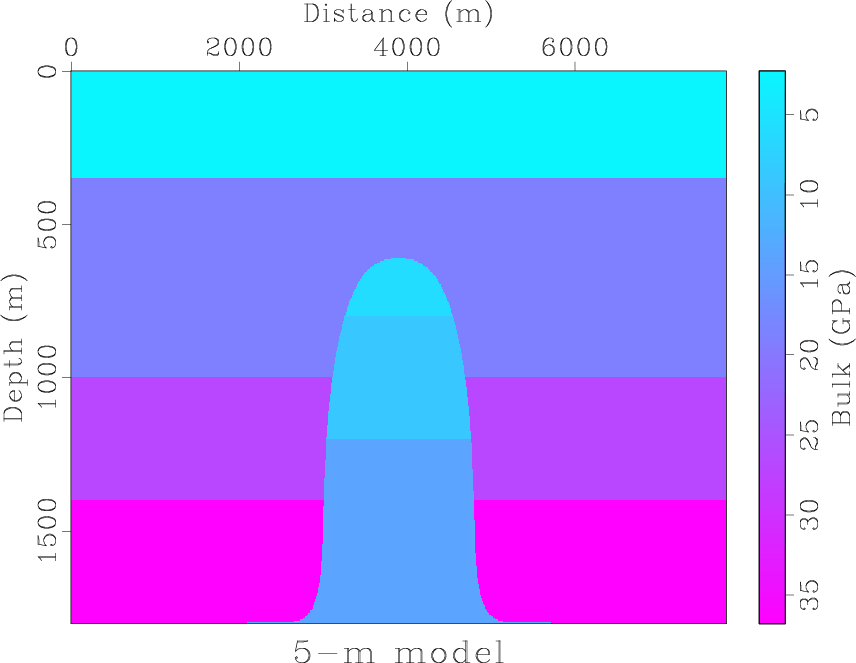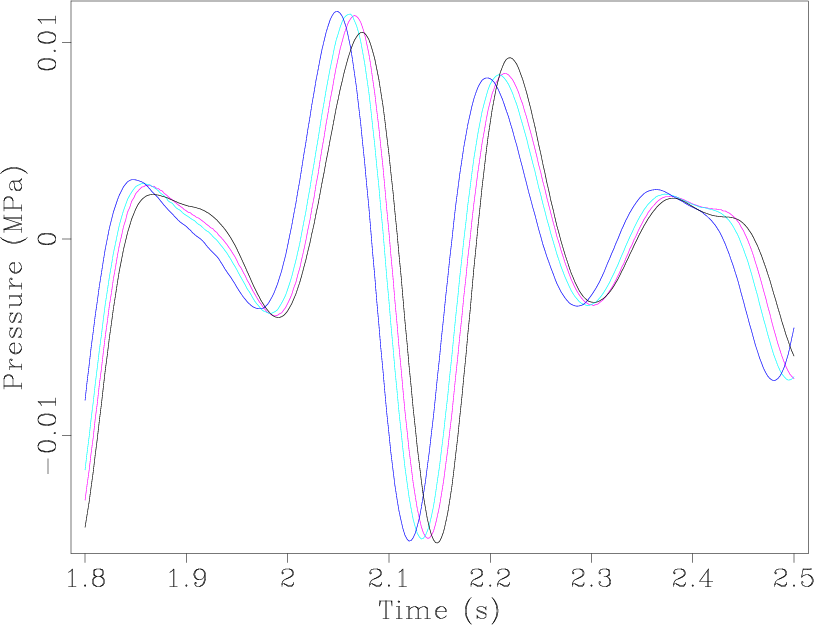|
|
|
|
Acoustic Staggered Grid Modeling in IWAVE |

|
|---|
|
frame13 Figure 1. Point source field, homogeneous medium with |
|
|

|
|---|
|
frame40-1 Figure 2. Point source field at 4.0 s, after interaction with reflecting (zero-pressure) boundaries |
|
|

|
|---|
|
frame40-2 Figure 3. Point source field at 4.0 s, after interaction with 250 m PML boundary zones on bottom and sides ( |
|
|

|
|---|
|
frame40-3 Figure 4. Point source field at 4.0 s, after interaction with 100 m PML boundary zones on bottom and sides ( |
|
|

|
|---|
|
bm1 Figure 5. Dome bulk modulus |
|
|

|
|---|
|
by1 Figure 6. Dome buoyancy |
|
|

|
|---|
|
data1 Figure 7. 2D shot record, (2,4) staggered grid scheme, |
|
|

|
|---|
|
trace Figure 8. Trace 100 (receiver x = 2100 m) for |
|
|

|
|---|
|
wtrace Figure 9. Trace 100 detail, 1.8-2.5 s, showing more clearly the first-order interface error: the time shift between computed events and the truth (the 2.5 m result, more or less) is proportional to |
|
|

|
|---|
|
data8k1 Figure 10. 2D shot record, (2,8) scheme, other parameters as in Figure 7. |
|
|

|
|---|
|
trace8k Figure 11. Trace 100 computed with the (2,8) scheme, other parameters as described in the captions of Figures 7 and 8. |
|
|

|
|---|
|
wtrace8k Figure 12. Trace 100 detail, 1.8-2.5 s, (2,8) scheme.. Comparing to Figure 9, notice that the dispersion error for the 20 m grid is considerably smaller, but the results for finer grids are nearly identical to those produced by the (2,4) grids - almost all of the remaining error is due to the presence of discontinuities in the model. |
|
|
|
|
|
|
Acoustic Staggered Grid Modeling in IWAVE |